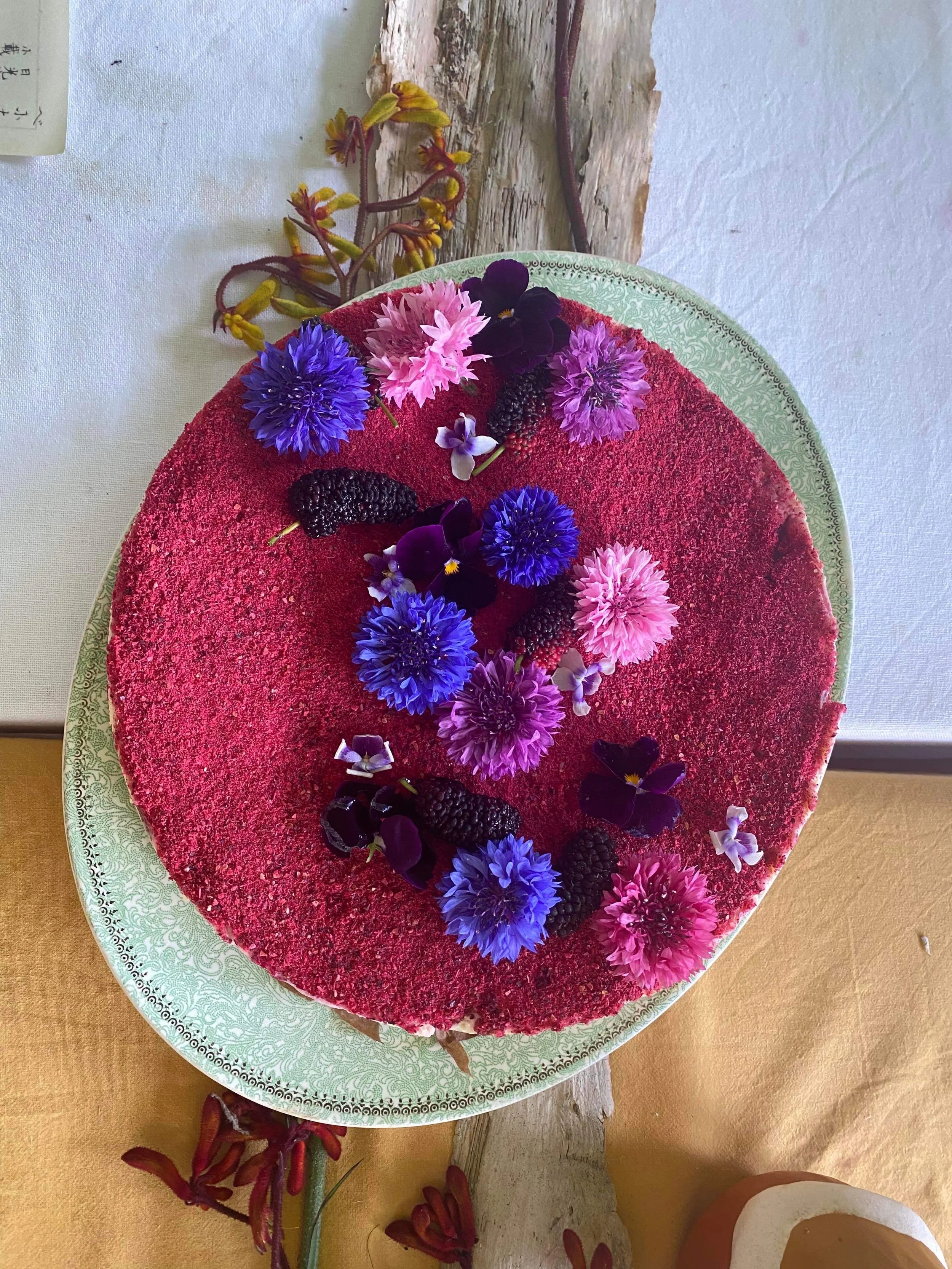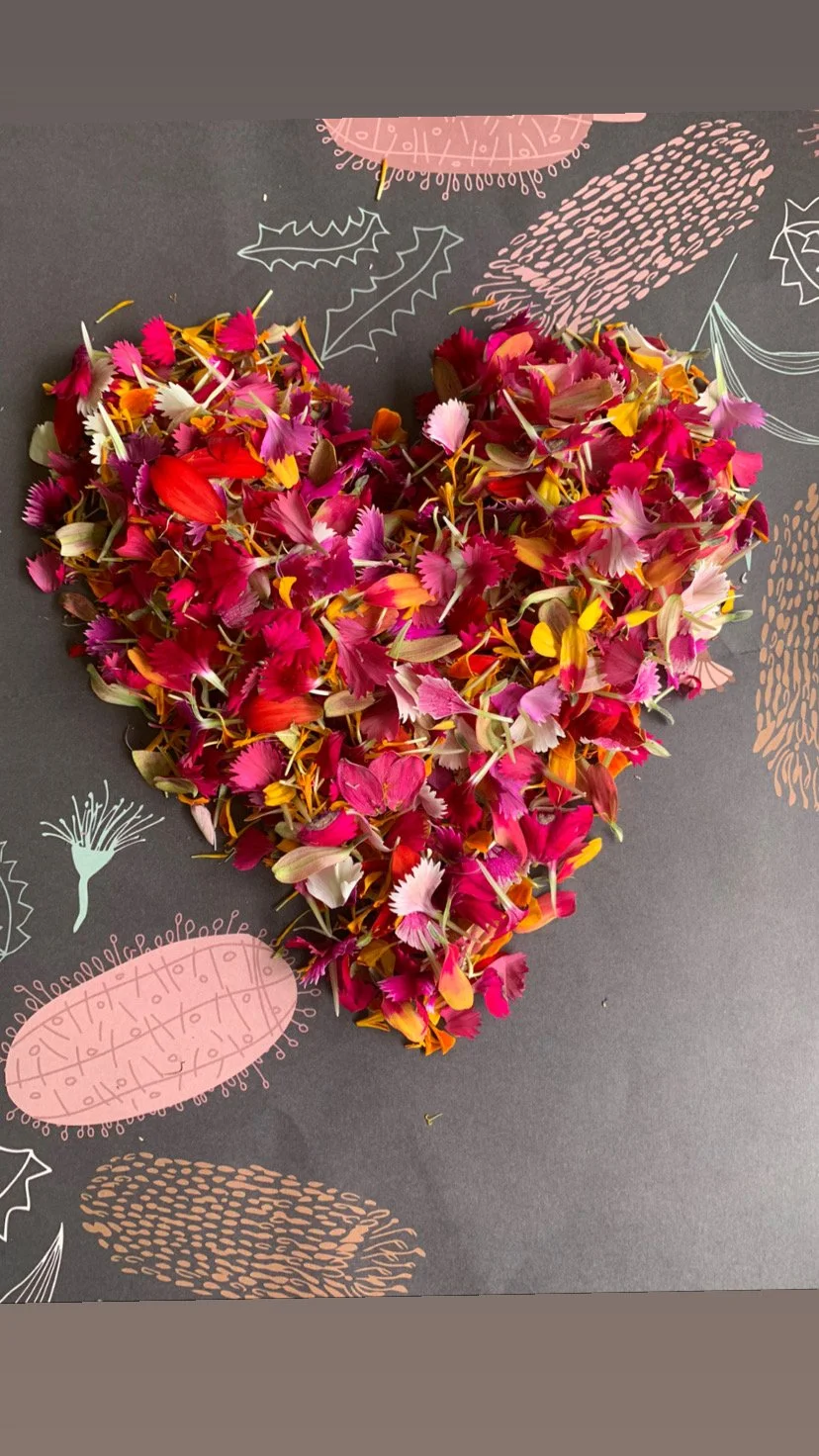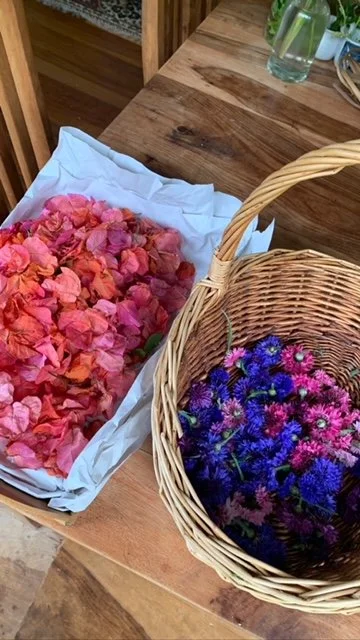The magical world of edible flowers
Lets take a foragers plate look at the magical world of edible flowers, and how best to capture, create and cook with flowers. Eating flowers conjures images of fairy tales, pretty pictures of an ethereal nature, of faeries and elves at tea parties with flower adorned cakes, sipping rosey tea, of delicate and whimsical foods decorated with all kinds of colours and shapes, its evocative of ideas of opulence and luxury, the stamens of the crocus flower, are to this day only able to be hand picked to be dried and sold as saffron, one of the most expensive foods in the world. There are edible flowers all around us, and we can start to wild forage or grow some flowers at home to add colour nutrition and variety to our diets, its with our eyes that we after all eat with first Eating the rainbow is full of nutrition and flavours, nasturtiums and pansies are high in vitamin C. Hibiscus flowers, normally only grown as ornamental these days can be eaten straight from the tree, but are more often dried for tea where in many places its used for its medicinal qualities high in antioxidants and thought to lower blood pressure and cholesterol levels, some make hibiscus jelly, jam or relishes, also lovely as an iced tea.
plants termed as weeds like purslane offer minerals and omega fatty 3. If we take the Humble yet fierce Dandelion for example the roots, leaves, flowers and even the flower buds are medicinal, nutritious foods. Long forgotten food sources that grew wild or even used to be cultivated and all parts of the plant had use. Marigolds to be called poor man's saffron and was a spice featured heavily in Georgian cuisine. Flowers are begging to help you eat the rainbow and are antioxidant rich and often have anti inflammatory properties.
Flowers have always allowed us to reveal in their beauty, and as a respect to country and nature herself stop to smell the roses if you will, notice how beautiful the shapes, colours and smells are, notice the bees, native or otherwise, who humbly spend their day bowing up and down worshipping flowers. It's amazing the positive effect being a naturalist and forager has upon your brain chemistry and mental health. As a rule of thumb when foraging only take what you need, and make sure to pick from untreated areas, and leave a thought for the birds and bees.
Best time to harvest edible flowers and this was traditional indigenous knowledge here in Australia was first thing in the morning or as early in the day as possible full of moisture and plump also laden with sweet nectar, indigenous Australians used banksia and grevillea flowers either to create a quick sweet drink but dipping the morning blooms in water or even left to slightly ferment creating what was described as a simple mead drink.
If intending to keep your edible blooms fresh for a length of time , dry off any dew on paper towels for flowers you wish to store in an airtight container with a little damp paper towel in the bottom, they should keep nicely in the fridge for at least 7 –10 days
Wild foraged or grown nasturtium seeds and dandelion rosettes make beautiful brinded and pickled “capers” . The green berries that form after the elder has flowered also do well as a caper substitute . This brings us closer and closer to where our food comes from, local free superfoods connect us to nature, this land and our own heritage and hunter gathers. Your biology is literally begging you to forage.
Consider drying or pressing flowers to capture the magic. I find anything I bake with edible flowers like my art focaccia or the shortbreads (pictured above) work better with pressed dried flowers. Pressed flowers are a lovely addition to logs of butter or soft cheeses for a table setting.
When eating flowers in a salad or garnish, pull the petals off the base just like I pinch action this way eating the rainbow is more palatable and tender and enjoyable to eat
Many times the leaves of edible flowers are edible themselves and like the cornflowers, Dahlia or lotus in the case of the later two, even the tubers that grow beneath are edible and provide complex starches similar to potatoes. A lot of flowers like dandelion, daylily, wattle blossoms, zucchini or pumpkin flowers do well with a batter treatment served sweet or savoury deep fried flowers for the win, wattle or dandelion fritters served savoury canapes beautifully. Banana flower is used in many cultures in curries or salads. I made a vegan ceviche with the very inner core of a banana flower last season with a sweet spicy salty dressing. Delicious.
Lavender can be eaten dried or fresh and pairs well with citrus, berries and savoury herbs like sage and rosemary, panna cotta with lavender and rosemary is aromatic and sweet. Rosemary flowers give a slightly more subtle flavour than the green herb itself which I find is mostly the case with all herb flowers, consider using flowers to impart subtle and unique flavours.
These days we simply look over the pumpkin flowers and leaves and only think the fruit itself as the prized position, but have you considered, ricotta stuffed pumpkin flowers or dolmades rolled from blanched pumpkin leaves with wild rice and bush lemon, but don’t forget that a lot of edible flowers like to be pickled like the yucca flowers, a member of the asparagus family, find them along urban roadsides or even in your own garden, when we start to see things as food our scope for the value of nature widens and this is where the magic is. Magnolia petals have a spicy ginger flavour and are well pickled too. Or even made into thick syrup to add to biscuits and cakes. Pollen is an edible flower item that's unusual and often medicinal, pine pollen is an easy one to collect from the male flowers of local weedy species like the slash pine.
Important considerations, floresty grown flowers often have been sprayed with chemicals so check with your florist or perhaps consider growing your own or specialty produce stores will stock edible flowers grown for consumption, or even ask at your local farmers market as most organic or biodynamic farmers will grow companion flowers to attract pollinators to their gardens it’s a good amount of jobs flowers have , most of all bringing us joy. I am an avid flower forager, at times a little cheeky , council plantings are often over crowded with blooms and don’t mind a small thinning out keep your eyes open as you get about for urban foraged native flowers that are edible like wattle, bottlebrush, lilly pilly all make amazing wild sodas. Lil ly pilly flowers and pink leaves taste of the fruits when they are not in season. The flowers are covered in sweet nectar and wild yeast that will ferment to create a slightly fizzy wild soda. Consider drying flowers to use year round in sunny natural fizzy drinks. Fresh or dried flowers work a treat and today we will be creating your own unique blend of foraged bush flower tisane a light and floral tea, this is also amazing fermented into wild soda, or simply as iced tea. Freezing flowers in ice cubes is another perfect way to capture sunny happy days year round in drinks
Not your average edible flowers list: Honeysuckle, Linden, Orchids, Baby Breath, Apple and plum blossoms, Geraniums, Grevillea, Lilly Pilly, Pig face, Ginger, Yucca, Magnolias, hibiscus, Day lily, Tulips, Begonias, Wattle, Primrose, Banana, Typha/catstails, Carnations, Fuchsia.
Edible flower magic is real, and its tangible and fun, playing with food creates joy in the kitchen at the table and in your garden. Life with edible flowers is better, more smiles, more ooo’s and ahhh’s. Let the rainbow into your life and belly. Start your edible flower journey today.
Foraging forever x
Chanterelle























